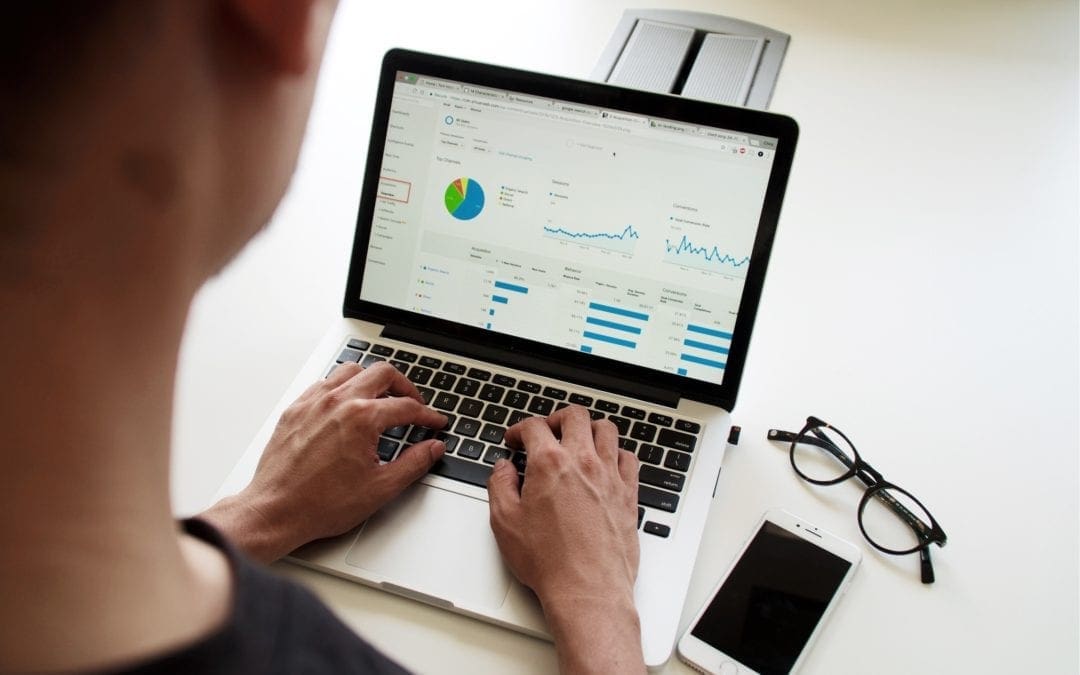Making Tax Digital Update
It has now been officially confirmed that the Making Tax Digital (MTD) Income Tax rollout will now be delayed until...

It has now been officially confirmed that the Making Tax Digital (MTD) Income Tax rollout will now be delayed until at least April 2026.
From April 2026 self employed individuals and landlords with gross income above £50,000 will now need to be part of the MTD system. This limit was previously £10,000 of income which means a lot of self employed individuals and landlords will no longer need to register for MTD.
From 2027 businesses (self employed and landlords) with income over £30,000 will need to register for MTD.
The income referred to above is gross income (turnover) and not profit.
Please do note that there will be no changes in respect of the basis period reforms which will go ahead as planned in the 2023-24 tax year.
We can help with the implementation of accounting software and systems, if you would like any assistance with this please get in touch. You can call on 01243 782 423 or head to our contact form.

Making Tax Digital (MTD) was brought in back in April 2019 for VAT registered businesses with a turnover above the VAT registration threshold (currently £85,000). All VAT-registered businesses trading at or above the VAT registration threshold have been required to keep digital records and submit their VAT returns via software that can directly link to HMRC.
The next phase of MTD was due to be brought in from April 2020 but owing to the pandemic this was pushed back to 1 April 2021.
WHAT IS THE NEXT PHASE
For periods starting on or after 1 April 2021, businesses trading at or above the VAT registration threshold will now also be required to have ‘digital links’ in all their record keeping. This means there can no longer be any cutting, copying or pasting of data from one application to another, all data must be digitally linked.
WHAT IS A DIGITAL LINK
HMRC have defined a digital link as the ‘ data transfer or exchange within and between software programs, applications or products that make up functional compatible software (and these) must be digital where the information continues to form part of the digital records’.
For HMRC’s full guidance see: https://www.gov.uk/government/publications/vat-notice-70022-making-tax-digital-for-vat/vat-notice-70022-making-tax-digital-for-vat
HMRC states that every piece of software must be digitally linked to all other pieces of software used in record keeping to create a ‘digital journey’. There needs to be a clear audit trail from all the data recorded in an accounting system all the way through to the submission of a VAT return to HMRC, this audit trail needs to be digitally linked together.
HMRC are bringing this in as it should remove the need for manual intervention and therefore should result in fewer errors being made.
DATA HELD IN A SINGLE SOFTWARE SYSTEM
A simple way of meeting these requirements will be to hold all of your records in a single software package that enables the submission of MTD returns directly to HMRC, such as Xero or QuickBooks Online.
All sales and purchase transactions will be recorded in the software and as long as the information input has the correct VAT codes the system will be able to compile a VAT return with no or very few manual adjustments (some manual adjustments will be allowed by HMRC, more about this further down in this blog).
THE END OF SPREADSHEETS?
There is a common misconception that this means the end of being able to keep records in an excel spreadsheet but this is not the case. Spreadsheets can still be kept as long as the spreadsheet contains formulas or macros to add up and link cells. For example, you could keep one spreadsheet for sales and another for purchases, you could then set up these spreadsheets with formulas to feed into VAT return boxes. You will need to be able to connect the spreadsheet to an API (application programming software, often know as bridging software) to submit the VAT return to HMRC.
DATA HELD IN MULTIPLE SOFTWARE SYSTEMS
Some businesses may have more than one piece of software they use for record-keeping, or you could be part of a VAT group where all the members of the group keep their own records. If you can export the VAT information from one piece of software and import it into another to produce the full records this is acceptable. If you cannot do this then you may possibly need to consolidate the information into a spreadsheet using links to separate spreadsheets and then submit the return via an API.
RECORDING SALES
Usually, sales will be recorded on an invoice to invoice basis but this may not always be practical. For example, a shop may have a till that can’t be digitally linked to a piece of accounting software and/or the volume of transactions may make it impractical to keep a record of every individual sale. If this is the case then you must keep a record of the daily takings. You could keep this record in spreadsheets that are then imported into accounting software or these could be used to feed into an API. If you then need to provide this information to an agent (for example Lewis Brownlee) to complete your VAT return HMRC has stated that emailing or transferring the data on a portable device are allowed as a digital link.
MANUAL ADJUSTMENTS
HMRC recognises that there may be times when manual adjustments to a VAT return will need to be made. For example, your software may not be able to calculate adjustments for partial exemption, if this is the case you can make the calculations in a separate spreadsheet and input the final figures manually into your VAT return, there does not need to be a digital link.
RECORDS THAT MUST BE KEPT DIGITALLY
You must have a digital record of:
When recording sales the digital record must include:
When recording purchases the digital record must include:
EXEMPTIONS
HMRC expect most businesses will be able to meet the requirements of MTD but do accept that it may not be possible for all.
You can apply to HMRC for an exemption if:
WHAT’S NEXT FOR MTD?
From 1 April 2022, all VAT registered businesses with a taxable turnover below the VAT registration will be required to follow MTD rules.
From April 2023 self-employed businesses and landlords with annual business or property income above £10,000 will need to follow the rules.
From April 2024 companies will start using MTD for Corporation Tax under a pilot scheme with all companies expected to join MTD for Corporation Tax from April 2026.
While MTD may appear daunting at first there is lots of software available that can make it relatively painless, you may also find that updated software can help save time and costs for your record-keeping overall.
We can help with the implementation of accounting software and systems, if you would like any assistance with this please get in touch.

HMRC introduced the first phase of Making Tax Digital (MTD) nearly two years ago and they have now announced that non-MTD VAT submissions via software providers will not be supported from April 2021.
Filing non-MTD VAT returns with Xero
If you use Xero this means that quarterly VAT periods ending in December 2020, January 2021 or February 2021 will be the last VAT returns that can be submitted using the non MTD-VAT return.
How can you prepare for this?
There are two options in preparing for this change. The first option is to register for MTD VAT with HMRC and then file VAT returns through the MTD VAT function in Xero ( you will need to do this from April 2022).
There is another option if you are not ready for MTD, or if you are under the threshold or part of a VAT Group. Xero have created a new non-MTD VAT return which can generate the VAT amounts and will be available from 23 November 2020. Please note that by doing it this way, you will be required to submit the return manually using HMRC online services or by using MTD bridging software (we can do this for you as part of our VAT service). This will also be the only non-MTD VAT return option in Xero for new trials and subscriptions moving forward.
If you do no use Xero and are not MTD registered the above is still applicable. From April 2021 you will need to register for MTD or use bridging software or file directly to HMRC.
If you need any assistance in getting MTD ready, or if you need us to guide you through non-MTD VAT returns, then please get in touch. You can call our VAT Compliance Manager Yvonne Collings on 01243 782 423 or send an email to [email protected].

I recall the first I heard of it was one morning more than 3 years ago when the radio news bulletin announced the end of the tax return. The plan was by April 2018, MTD would be implemented and a Digital Tax Account would replace the self assessment tax return. All businesses (including landlords), grossing over £10,000 would have to keep their records in digital format, and make quarterly submissions of this information to HMRC. The Government claimed this would give the UK the most sophisticated tax system in the world.
The Government’s motives for doing this were perfectly understandable. There are a lot of small businesses in the UK. At the moment, the deadline for these businesses to submit their records and pay the resulting tax and national insurance liabilities could be as much as 21 months after their year end. If the records are not compiled until near the relevant deadline, a lot of time will have passed by, and inevitably documents will have gone missing and crucial facts forgotten. Ultimately this means the information that is eventually submitted invariably will not be completely accurate. Human nature being what it is, the suspicion is that if a taxpayer estimates information, these estimates would be in their favour. The Government’s think tank believes this lax approach to tax compliance has contributed to a massive tax shortfall.
Beyond this as well, it was also hoped that by introducing a more sophisticated tax system, information relating to those who are not in self assessment could be automatically collated and assessed. If tax was owed on modest amount of investment income for example, the digitalisation of tax would mean that this could automatically happen.
I think it is fair to say that progress in implementing MTD has not gone anywhere near as well as the Government had hoped. Perhaps the outcome of the June 2016 referendum has not helped. Maybe their decision to target the tax treatment of IT experts operating through personal service companies has had an impact. What we know is that we ate now past April 2018, and nothing much has changed.
At the moment, MTD remains most relevant to businesses whose taxable turnover exceeds the VAT threshold. From April 2019 such businesses will no longer be able to keep manual records. Digital records must be maintained in functional compatible software, which is able to connect to HMRC via an Application Programming Interface (API). Quarterly VAT returns will then have to be submitted directly from the software, and not by entering figures directly onto HMRC’s own portal. Any VAT registered business that is not using already using compatible software should urgently consider doing so before it becomes mandatory.
The latest update form my Institute included the following line – ‘April 2019 remains a challenging time frame, particularly as the software trials are currently in a very early stage and on a very small scale’, which at the very least suggests it is unlikely to be an easy and smooth process. More delays are possible, but the Government is also very committed to making sure this happens.
The overall plan remains for MTD to in some way involve all UK taxpayers. It is a huge project, but for the reasons mentioned above the expectation is that ultimately MTD will benefit the Treasury. Expect the following to happen;
Clearly not everyone will be able to comply with this. Exemptions will be granted to those with incompatible religious beliefs, or those who are technologically excluded (due to age, disability or remoteness of location).
Change is inevitable. Accepting this and embracing inevitable changes in digital accounting sooner rather than later will make life easier in the long run. For this reason I would recommend that all businesses start to make use of an online accounting package (such as Xero, Quickbooks, Sage etc) as soon as possible. Individuals should also access their Personal Digital Account with HMRC, and watch this space for further updates!

The government recently indicated that they are still fully committed to their plans to operate a digital tax system. From April 2019, when submitting quarterly VAT returns, businesses will be required to keep supporting information in qualifying digital format and submit their VAT returns to HMRC through API (Application Programming Interface) enabled software.
Presently around 86% of VAT returns are submitted electronically via HMRC’s government gateway. HMRC have stated the government gateway route will be closed down – so VAT returns will need to be submitted using API enabled software.
This change will affect a lot of business, so we highly recommend ensuring that you acquire and use some API enabled software as soon as possible, so when the first MTD compliant VAT return is submitted, you will be comfortable that the relevant underlying information is where it should be. We will of course be happy to help with this, and run regular free sessions explaining how to use Xero, one such API enabled software.

Here you can find all our content and resources around Making Tax Digital
Do you keep spreadsheets for your accounting records? Not only could this be costing you time, and money, it may not be compliant with Making Tax Digital. Find out more in our guide.
Our complete guide on everything you need to know about Making Tax Digital including: What it is; Software; HMRC Registration and Xero.
For periods starting on or after 1 April 2021 businesses trading at or above the VAT registration threshold will now also be required to have ‘digital links’ in all their record keeping.
MTD for Income Tax Self-Assessment (MTD ITSA) will include any unincorporated businesses or property landlords with income in excess of £10,000.00.
Landlords with annual property income above £10,000 will need to follow the rules for MTD for Income Tax from 6 April 2023.
Here’s our overview of the upcoming changes to self-assessment, namely Making Tax Digital which will apply from 6 April 2023.
An overview of the Digital Links aspect of Making Tax Digital, and the benefits of moving to a cloud accounting system.
It has now been officially confirmed that the Making Tax Digital (MTD) Income Tax rollout will now be delayed until...
Making Tax Digital (MTD) was brought in back in April 2019 for VAT registered businesses with a turnover above the...
HMRC introduced the first phase of Making Tax Digital (MTD) nearly two years ago and they have now announced that...
What is Making Tax Digital (MTD) all about? Hopefully by now everyone will have heard of MTD, and have a rough idea...
The government recently indicated that they are still fully committed to their plans to operate a digital tax...
making tax digital Here you can find all our content and resources around Making Tax DigitalguidesDo you keep...